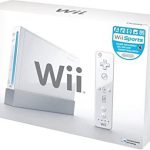Content Table:
Nintendo Welcomes Wii
Most gamers may know it as Nintendo Revolution, but the new name is Wii (pronounced as “we”). On April 27th, Nintendo launched their seventh-generation video game console, which also marks their fifth home console, succeeding the Nintendo GameCube. What sets Wii apart from its predecessors is the innovative Wii Remote, or “Wii-mote,” which functions both as a handheld pointing device and a motion detector in three dimensions. The controller features a built-in speaker and a rumbling device that provides sensory feedback, enhancing the gaming experience.
Launch Details
As of June 2006, an exact release date had not yet been confirmed. However, Nintendo indicated plans to release the Wii in the fourth quarter of 2006. They aimed for a synchronized launch across regions, hoping to minimize the time difference between the first and last launching areas to no more than four months. During a briefing in Japan in June, it was announced that a precise release date and pricing details would be provided by September.
The Wii was confirmed to be priced at no more than $250, with a Nintendo spokesperson indicating that the price in the UK would align with those in Japan and the US. Nintendo set ambitious goals, intending to sell approximately 6 million console units and 17 million software units by March 31, 2007.
Design and Size
Wii is Nintendo’s smallest home game console yet, approximately the size of three standard DVD cases stacked together. It has been designed to stand both horizontally and vertically, providing flexibility for users with different space constraints. Additionally, Nintendo announced plans for a small attachment that would allow the console to play DVD Video.
The company showcased the Wii in various colors, including platinum, lime green, white, black, blue, and red, although the final color selections had yet to be confirmed. The models displayed at E3 2006 featured several minor design alterations from earlier versions. Notably, the branding on the console had replaced the Wii logo, and the disc loading slot was slightly enlarged. The reset button was relocated from next to the eject button to the power button, and the power indicator light was moved inside the power button itself. The port for the sensor bar, essential for the Wii Remote’s three-dimensional sensing capabilities, was now located at the rear of the console, a feature not previously visible in earlier images.
WiiConnect24
During E3 2006, Nintendo introduced WiiConnect24, a feature of the Nintendo Wi-Fi Connection that allows the console to remain connected to the internet in standby mode. This feature opens up exciting possibilities, such as enabling friends to visit a player’s village in games like Animal Crossing and allowing for automatic updates of games while the console is in standby. Additionally, users could download promotional demos for the Nintendo DS through WiiConnect24, later transferring them to their handheld device.
Wireless Connectivity
The Wii will support wireless connectivity with the Nintendo DS, although Nintendo was still finalizing the details regarding when these features would be made available to the public. This connectivity is expected to enhance the gaming experience by integrating different gaming platforms seamlessly.
Conclusion
The Wii represents a significant leap in gaming technology, focusing on interactivity and user engagement. With its unique controller, affordable pricing, and innovative features, Nintendo aims to attract a wide audience of both casual and hardcore gamers. As we look forward to its release, the excitement surrounding the Wii promises to usher in a new era of gaming that emphasizes fun, creativity, and community.
For more articles, information, news, photos, game lists, and additional content related to Nintendo Wii and its games, visit NintendoWii.biz.



